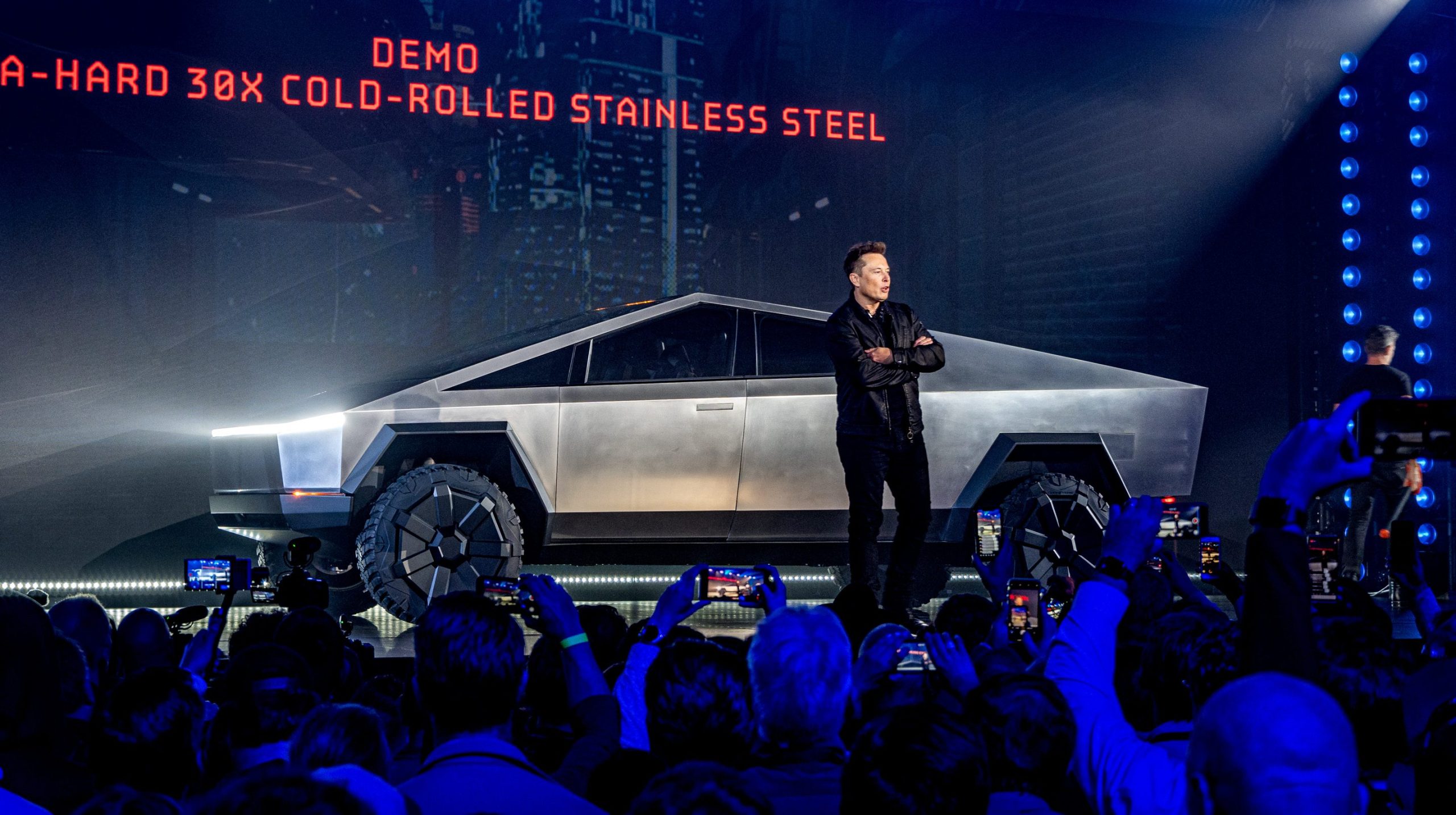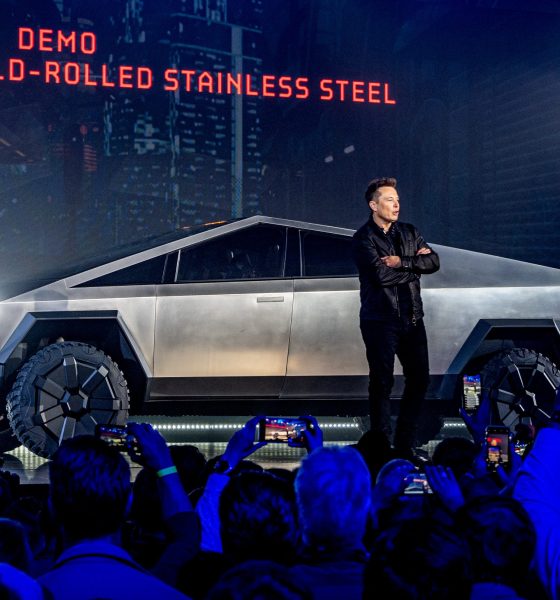

News
Elon Musk gives nod to Tesla ads that support ‘high quality’ media
It is well known in the electric car community that Elon Musk detests traditional advertisements. The Tesla CEO has emphasized for years that Tesla does not advertise or pay for endorsements. Instead, the company simply utilizes its resources to ensure that its products are great. If a recent comment is any indication, however, it appears that Elon Musk may be softening up a bit when it comes to his stance on advertisements.
The CEO’s comments were recently related as a response to an article from fellow EV news outlet CleanTechnica, which covered the recent price reduction of Tesla’s solar solutions. After commenting that it’s still “better to put the money into the product than sales & marketing,” Elon Musk noted that eventually, Tesla should probably do some advertising to support “high quality media.” This is quite a statement from the CEO, who has been anti advertisement in the past.
Elon Musk’s references about supporting high quality media open a lot of opportunities for the electric car maker. The CEO, after all, is a known supporter of non traditional media sources, as evidenced by his overt support for prolific podcaster Joe Rogan, whose approach to information dissemination is quite different from mainstream media. References to art and entertainment also invoke past programs from the company, such as Project Loveday, where the Tesla community was tapped to create compelling videos featuring the company’s products.
The topic of Tesla advertisements has been expressed for some time now, at one point being discussed directly at an annual shareholders meeting. During the event, some Tesla shareholders even volunteered to utilize their own resources for the company’s advertising push. Musk, for his part, stated that he has reservations about advertising due to the level of trickery that usually goes with the practice. Nevertheless, the CEO did admit later on that Tesla could have “advertising for information to refute misinformation.”
And here lies a key reason behind the push for Tesla’s advertising efforts. The company is in calmer waters now compared to last year, but there is still no shortage of negativity surrounding Tesla and Elon Musk. A lot of the negativity, such as the perception that electric cars are more harmful to the environment, or that Teslas start at over $100,000, or that Elon Musk is a fraud, are surprisingly prevalent until today. The majority of these are easily debunked if Tesla has a serious anti misinformation campaign.
What is quite interesting is that Tesla does not really have to advertise itself in the traditional sense. The company could simply focus on setting the record straight with regards to the negativity that surrounds it. Examples of these could include the proper utilization of Autopilot and the Full Self Driving suite, two of the company’s products that attract a significant amount of ire from critics. These little campaigns could go a long way in ensuring that the right information is available online, and out in the open.
Tesla is now at a point where it has two mass market vehicles that could compete with other reasonably priced premium vehicles on the market. And if reports are accurate, it appears that the company is looking to release an even more affordable vehicle in the future. Tesla is now the largest automaker in the world by market cap, and its growth is unlikely to stop anytime in the near future. With this in mind, it might soon be the right time for the company to push forward even more, even if it has to advertise in the process.

News
Tesla FSD fleet is nearing 7 billion total miles, including 2.5 billion city miles
As can be seen on Tesla’s official FSD webpage, vehicles equipped with the system have now navigated over 6.99 billion miles.

Tesla’s Full Self-Driving (Supervised) fleet is closing in on almost 7 billion total miles driven, as per data posted by the company on its official FSD webpage.
These figures hint at the massive scale of data fueling Tesla’s rapid FSD improvements, which have been quite notable as of late.
FSD mileage milestones
As can be seen on Tesla’s official FSD webpage, vehicles equipped with the system have now navigated over 6.99 billion miles. Tesla owner and avid FSD tester Whole Mars Catalog also shared a screenshot indicating that from the nearly 7 billion miles traveled by the FSD fleet, more than 2.5 billion miles were driven inside cities.
City miles are particularly valuable for complex urban scenarios like unprotected turns, pedestrian interactions, and traffic lights. This is also the difference-maker for FSD, as only complex solutions, such as Waymo’s self-driving taxis, operate similarly on inner-city streets. And even then, incidents such as the San Francisco blackouts have proven challenging for sensor-rich vehicles like Waymos.
Tesla’s data edge
Tesla has a number of advantages in the autonomous vehicle sector, one of which is the size of its fleet and the number of vehicles training FSD on real-world roads. Tesla’s nearly 7 billion FSD miles then allow the company to roll out updates that make its vehicles behave like they are being driven by experienced drivers, even if they are operating on their own.
So notable are Tesla’s improvements to FSD that NVIDIA Director of Robotics Jim Fan, after experiencing FSD v14, noted that the system is the first AI that passes what he described as a “Physical Turing Test.”
“Despite knowing exactly how robot learning works, I still find it magical watching the steering wheel turn by itself. First it feels surreal, next it becomes routine. Then, like the smartphone, taking it away actively hurts. This is how humanity gets rewired and glued to god-like technologies,” Fan wrote in a post on X.
News
Tesla starts showing how FSD will change lives in Europe
Local officials tested the system on narrow country roads and were impressed by FSD’s smooth, human-like driving, with some calling the service a game-changer for everyday life in areas that are far from urban centers.

Tesla has launched Europe’s first public shuttle service using Full Self-Driving (Supervised) in the rural Eifelkreis Bitburg-Prüm region of Germany, demonstrating how the technology can restore independence and mobility for people who struggle with limited transport options.
Local officials tested the system on narrow country roads and were impressed by FSD’s smooth, human-like driving, with some calling the service a game-changer for everyday life in areas that are far from urban centers.
Officials see real impact on rural residents
Arzfeld Mayor Johannes Kuhl and District Administrator Andreas Kruppert personally tested the Tesla shuttle service. This allowed them to see just how well FSD navigated winding lanes and rural roads confidently. Kruppert said, “Autonomous driving sounds like science fiction to many, but we simply see here that it works totally well in rural regions too.” Kuhl, for his part, also noted that FSD “feels like a very experienced driver.”
The pilot complements the area’s “Citizen Bus” program, which provides on-demand rides for elderly residents who can no longer drive themselves. Tesla Europe shared a video of a demonstration of the service, highlighting how FSD gives people their freedom back, even in places where public transport is not as prevalent.
What the Ministry for Economic Affairs and Transport says
Rhineland-Palatinate’s Minister Daniela Schmitt supported the project, praising the collaboration that made this “first of its kind in Europe” possible. As per the ministry, the rural rollout for the service shows FSD’s potential beyond major cities, and it delivers tangible benefits like grocery runs, doctor visits, and social connections for isolated residents.
“Reliable and flexible mobility is especially vital in rural areas. With the launch of a shuttle service using self-driving vehicles (FSD supervised) by Tesla in the Eifelkreis Bitburg-Prüm, an innovative pilot project is now getting underway that complements local community bus services. It is the first project of its kind in Europe.
“The result is a real gain for rural mobility: greater accessibility, more flexibility and tangible benefits for everyday life. A strong signal for innovation, cooperation and future-oriented mobility beyond urban centers,” the ministry wrote in a LinkedIn post.
News
Tesla China quietly posts Robotaxi-related job listing
Tesla China is currently seeking a Low Voltage Electrical Engineer to work on circuit board design for the company’s autonomous vehicles.

Tesla has posted a new job listing in Shanghai explicitly tied to its Robotaxi program, fueling speculation that the company is preparing to launch its dedicated autonomous ride-hailing service in China.
As noted in the listing, Tesla China is currently seeking a Low Voltage Electrical Engineer to work on circuit board design for the company’s autonomous vehicles.
Robotaxi-specific role
The listing, which was shared on social media platform X by industry watcher @tslaming, suggested that Tesla China is looking to fill the role urgently. The job listing itself specifically mentions that the person hired for the role will be working on the Low Voltage Hardware team, which would design the circuit boards that would serve as the nervous system of the Robotaxi.
Key tasks for the role, as indicated in the job listing, include collaboration with PCB layout, firmware, mechanical, program management, and validation teams, among other responsibilities. The role is based in Shanghai.
China Robotaxi launch
China represents a massive potential market for robotaxis, with its dense urban centers and supportive policies in select cities. Tesla has limited permission to roll out FSD in the country, though despite this, its vehicles have been hailed as among the best in the market when it comes to autonomous features. So far, at least, it appears that China supports Tesla’s FSD and Robotaxi rollout.
This was hinted at in November, when Tesla brought the Cybercab to the 8th China International Import Expo (CIIE) in Shanghai, marking the first time that the autonomous two-seater was brought to the Asia-Pacific region. The vehicle, despite not having a release date in China, received a significant amount of interest among the event’s attendees.








